Introduction
A current Swedish review of digital history claims that research in digital history in Sweden is almost absent.1 This statement must naturally be considered in the light of how the field is defined, and in this article we choose a broad definition consisting of the aggregate domain of studies in which digital material and tools are used to study the past. Digital history is without a doubt a more active field in English-speaking academic settings, but there are a number of well-established projects and initiatives in Sweden. The case studies presented in this article are cross-disciplinary and might therefore not define themselves as strictly (or solely) digital history. This may, however, be irrelevant in the post-disciplinary context.
The digitization of historical source material has increasingly compelled Swedish historians to navigate in digital environments. This increased accessibility and the capacity for digitally processing historical material hold great potential for empowering research. While on the one hand, considerable growth can be expected in the coming years as technology becomes more accessible, user-friendly and domain science orientated2, on the other hand, the expansion of digital archives and the development of digital tools are already posing new challenges for historians. Knowledge and understanding of digital media needs to be augmented considerably in order to fully take advantage of contemporary research opportunities and challenges. This essay will discuss how the creation of data and the use of new digital tools might support a variety of types of historical research, primarily by looking at developments in digital humanities (hereon DH) and digital archaeology. The variegated realm of DH practices, with their background in humanities computing and computing linguistics, will be used as a point of departure. Internationally, DH often uses the concept of labs to describe environments designed for the use of data and tools in interdisciplinary research.3 Centres of DH have primarily been created in the USA and, more recently, in Europe.
While on-going research in multiple fields, using digital data and tools, is contributing important new knowledge and developing infrastructures which are advancing the study of history; there is, of course, considerable room for improvement, both in terms of the efficiency of the tools and the scope of their application. This article will present two Swedish examples of interdisciplinary and collaborative lab spaces which are currently involved in research on the past. The more disciplinary practices of digital archaeology and digital history will also be examined in order to flag out current historically orientated research which may fall under the umbrella of DH. The essay will conclude by discussing some potential future directions.
Interdisciplinary Practices in DH
The use of research orientated databases in Sweden dates back to the 1960’s, prior to the creation of the World Wide Web. The Language Bank [Språkbanken], at Gothenburg University, created an electronic text corpus in Swedish building on the work of Sture Alléns4. This database of newspaper text, containing over a million words and built for corpus linguistic research and public use, was one of the first of its kind in a language other than English. Centres of linguistics programming and computational linguistics are currently situated in Gothenburg5 and Stockholm6. These environments focus on the use of digital data and tools with respect to a number of archives and projects, including the Stockholm-Umeå Corpus7, which is built upon the Text Encoding Initiative (TEI)8. The digital research tool Korp9 (below) can be used for text mining and distant reading of this corpus.
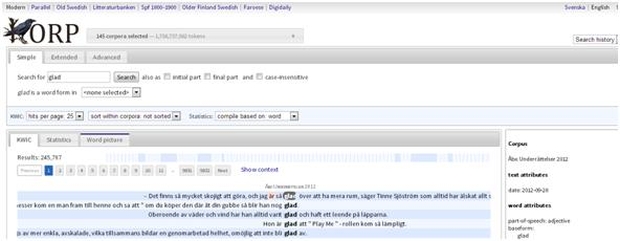
Fig. 1: http://spraakbanken.gu.se/korp/ (18.07.2014)
Gothenburg also leads the Swedish component of the international Common Language Resources and Technology Infrastructure (CLARIN)10, essentially as a node in a growing federated database and language services network. Digitized and processed historical literature can also be found in amateur initiatives such as Project Runeberg11, which provides scanned and searchable classic Nordic literature and academic texts. Interestingly, and in contrast to many academic digital archives, amateur initiatives are often made publicly available online rapidly after scanning.12
Until 2005, only a small but diverse group of literature orientated scholars used digital corpora and tools in humanities research.
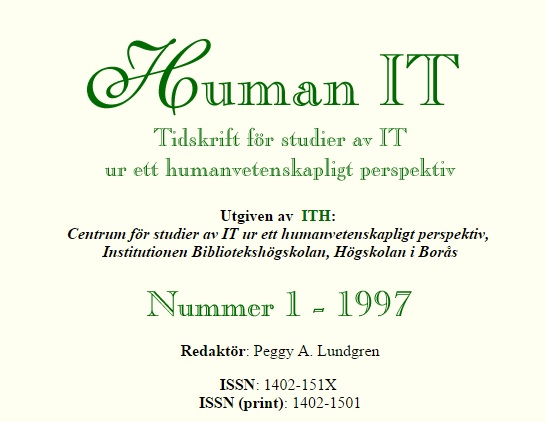
Fig. 2: http://etjanst.hb.se/bhs/ith/humanit.htm (18.07.2014)
Parallel developments in other areas evolved more or less independently of this group, with influences from beyond the humanities, as was the case for much of the analogous work undertaken in history and archaeology. The Nordic scholarly journal, Human IT13, was launched in 1997 with the purpose of reviewing and debating the relationship between the humanities and IT. Subsequently, in 1999, an interdisciplinary lab (HUMlab) was formed at Umeå University, initially directed by Torbjörn Johansson, who had “a very strong idea about an intersectional meeting place for the humanities, culture and technology”14. At the same time, the project ITLIT15 (1999–2003) was initiated in Uppsala to study the effects of computerization on literature, with a focus on IT, storytelling and the literary system. A formative conference in 2003 revealed a small but growing field of literature and linguistics scholars problematizing the Digital Dimensions in the humanities.16 The number of scholars interested in humanities in a digital world has since multiplied, most significantly after Humanities Computing was essentially rebranded as DH circa 2005.17
Laboratory Spaces
HUMlab (Umeå)
HUMlab, at Umeå University, is currently the most well established DH lab in Sweden. Directed by Sweden’s first professor in Digital Humanities (Patrik Svensson) it is an interdisciplinary meeting place where digital tools are used and analysed in research, education and artistic creation. HUMlab is orientated towards multidisciplinary humanities, and employs historians, linguists, artists, ethnologists, media and computer scientists, technicians and developers. It also works with researchers, developers and creators employed by other departments, administrative authorities and industry. Research at HUMlab is often conducted with a base in traditional humanities and social science disciplines, in many cases the materiality of digital media being considered from different perspectives, not least exploratory, experimentally and historically. The Media Places research programme, for example, includes a study of the impact of screens on society.18 A number of other projects have focussed on marginalized groups, including the online activities of Sami people19 and personal self-harm on YouTube20. Other activities in the lab contain gender critical studies21 including a Digital Gender Research Network22, critical making23 and teaching humanities relevant digital competence to students, university staff and schools. The first Nordic doctoral student course in digital history24, given by Finn Arne Jørgensen, was also hosted in HUMlab in 2013-14.
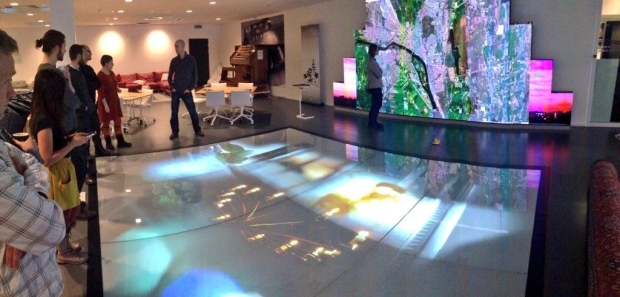
Fig. 3: Screenscapes in HUMlab X: The floor screen and triptych screen create a magic pool (Photograph by Finn Arne Jørgensen)
HUMlab has a particular inclination towards screen-based research, and the on-going project Screens as Material aims in particular to discuss the role screens play in research infrastructure. Related projects Digital Ekphrasis25, Imitatio Mariae26 and Digital Bread and Circuses27 aim to conceptualize and produce narratives across multiple screens (as opposed to narratives for single screen environments) and investigate how arts-based and traditional modes of knowledge production influence each other in screen-rich environments and via other sensory and interactional features. In addition to traditional publications, a number of these projects and related initiatives have and will produce exhibitions within HUMlab’s premises, as well as online, open access material. The Bread and Circuses project aims to go beyond 3D aerial prototypes, and follows instead recent trends in visualization that dictate participatory design, tangible screen technologies, kinaesthetic, and sounds (archaeoacoustics as well as conceptual sound engineering). The aim is to recreate a conceptual experience that is linked to raw data (literary and material primary sources) via critical making.28 It also aims to address traditional questions as well as novel ones, specifically, the implementation of technology for the study and communication of remote geographical and cultural contexts.
The aforementioned research projects touch upon issues in history relating to the reimagining of the past in digital worlds29, something which is undertaken more empirically in collaboration with the Strategic Environmental Archaeology Database (SEAD)30 infrastructure31. Another focus at HUMlab is on the potentials and pitfalls of using digital data and digital tools in historical research32, a theme closely related to the analysis of the possibilities and challenges of using digital databases in the teaching of history33. The materiality of the digital environment and its impact on historical writing is also being investigated, and by studying sensing and sense-making in digital and traditional archives, the extent to which an individual’s writing of history may be stimulated in various ways by space, materials and media34, may be highlighted.35
Digital infrastructure and knowledge construction are important concepts in current collaboration between HUMlab and Stanford University, which contributes to the analysis of challenges regarding digital media places36, not least when studying the past. A common thread in much of HUMlab’s project participation is the development of long term infrastructure for the support and empowerment of research. Much of this work is currently focussed on multi-purpose or adaptable tools for use in archaeological and historical studies e.g. QVIZ37, SEAD38 and SHiPS39. Textometrica40, a tool created for contemporary sociological analysis of online media activity, can be used in the distant and close reading of big text-based data. It is currently being re-purposed for the analysis of historical texts: quantitatively, qualitatively and visually.
The QVIZ system (Query and context based visualization of time-spatial cultural dynamics; Palm 2009) was originally developed as part of an EU project of the same name to help researchers and stakeholders use large digital archives in complex processes and enquiries. The system combines dynamic maps with filters/facets for multiple parameters and allows scholars analyse big data through the visualization and aggregation of data in terms of spatio-temporal and thematic relationships. The SHiPS online interface was developed, in collaboration with the Demographic Database (DDB, Umeå)41, using this infrastructure to promote the use of historical population records (from 1749 to 1859) and provide a window for quantitative analyses. The system has similarly been employed as the main online interface for SEAD42, allowing the aggregation and subsequent extraction of environmental archaeology data in ways which were previously extremely difficult to achieve, due to the large scope and complexity of the data.

Fig. 4: http://www.byzantinejewry.net/ (18.07.2014)
In addition, tools for Mapping the Jewish communities of the Byzantine empire43, also based on QVIZ, have been developed in collaboration with Cambridge University. The CitizMap project44 used the QVIZ system for providing access to statistics on social, demographic and economic data for the city of Tallinn in Estonia. This experience of data visualization provides an important background for HUMlab’s involvement in the InfoViz working group of the EU-financed NeDiMAH project45, which is looking into the use of digital information in the humanities on a broad scale.
Humanities Laboratory (Lund)
The Humanities Laboratory46 is an interdisciplinary space for research and education in the joint faculties of Humanities and Theology at Lund University. With activities throughout the humanities, it provides training in technology, methodology, archiving expertise, and is involved in a wide range of research projects which complement the activities of the Umeå HUMlab. Research is undertaken on issues of communication, culture, cognition and learning in particular, and the lab is widely regarded as a strong local, national and international environment. Other projects are interdisciplinary and conducted in collaboration with the social sciences, medicine, the natural sciences, engineering, and e-Science. The lab has a strong focus on the use of innovative technologies for crossing disciplinary boundaries, such as eye-tracking analysis, echo-free rooms, use of tongue sensors in linguistics, iCube visualizations of immersive 3D archaeological environments and mobile platform archaeological reconstructions. There is a strong emphasis on combining traditional and novel methods, as exemplified by the application of tongue sensors to linguistics in the project Exotic vowels in Swedish: an articulographic study of palatal vowels [VOKART]47; an attempt to increase research collaboration between the Humanities and Medicine.48
Developments in the analysis orientated visualization of archaeological remains can be seen through the Humanist Laboratory’s involvement in the Swedish Pompeii project.

Fig. 5: http://www.pompejiprojektet.se/navigate.php (18.07.2014)
The project was initiated at the Swedish Institute in Rome in 2000 with an aim towards recording and analysing an entire Pompeian city-block, Insula V 1, which can now be navigated online.49 The project goes beyond traditional archaeological analyses and tests the use of historical analogies in understanding the everyday life of the past. Research is now directed from the Department of Archaeology and Ancient History at Lund University, and includes the use of advanced digital archaeology and 3D scanning and documentation.50 The first 3D models were made available for open access in January 2013, and work is ongoing using 3D GIS for interpreting the functional use of rooms, power and visibility in a Roman city.
In common with HUMlab in Umeå, the Humanities Laboratory transgresses the boundaries between science and arts, with an emphasis on participatory media and museum installations. In the Petroglyphics – Virtual Rock Arts Experiences exhibition51 visitors are able to partake in a Bronze Age funerary procession, either following prescribed dance movements or improvising.
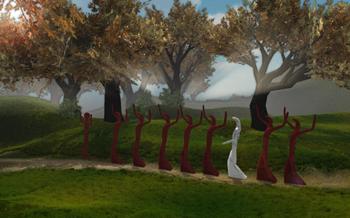
Fig. 6: Virtual Rock Arts Experiences Lund-Launched 31st of December 2013 (Screenshot by Carolina Larsson, Lund University Humanities Lab)
Disciplinary Inquiries
Digital Archaeology
Archaeology is by its very nature an interdisciplinary science, and as such has been quick to adopt digital technologies (databases, electronic field surveys and mapping) into research methodologies.52 The majority of practical archaeologists now routinely include the use of digital methods in their work, and there is perhaps no longer any meaningful delineation between “digital” and traditional archaeology. Digital visualization has become relatively common in the last decade, and tends to take one of two approaches: 1) 3D models of artefacts or structures and 2) scientific visualization of data, relationships, networks and models; with landscape reconstruction forming a bridge between them.
A forerunner in the use of GIS in archaeology in Sweden was the Uppsala GIS-laboratory, established in 1989 at the Department of Archaeology and Ancient History at Uppsala University.53 Since 2009, this has included the Rethinking Human Nature (RHN) research group54, which aims to integrate digital information into dynamic models of prehistoric and historic landscapes and societies in cross disciplinary research. The group engages in critically scrutinising theoretical and methodological archaeological research agendas. At other Swedish universities, GIS technology is routinely used in archaeological research and teaching, but without the benefit of a specialized research group. The Environmental Archaeology Lab55 in Umeå, for example, routinely uses digital tools and GIS in the analysis of empirical evidence for past interactions between humans and the environment. These are implemented in teaching, research and the development of new analysis methods.
The Swedish National Heritage Board56 (Riksantikvariet) started digitizing the analogue national sites and monuments record (Fornminnesregistriet) in 1984, a project which continued until 2005 and resulted in FMIS57, the digital sites and monuments record. Records of newly discovered archaeological sites and historical monuments have since then routinely been digitized, although the process, which is currently under revision (see DAP below), is cumbersome and includes a number of bottlenecks which hinder the effective flow of information. This has to an extent limited the system’s usefulness in research, and as a result a number of regional archaeological databases58 and tools (e.g. Övik 10000 år)59 have been created to serve specific project or local authority purposes. Unfortunately, few of these latter systems are currently connected to research activities, and there is a significant continuity problem with respect to digital archives in archaeology in Sweden.
DAP (Digital Archaeological Processes)60 is a project run by the Swedish National Heritage Board with an aim towards mapping the flow of analogue and digital information in Swedish archaeology. The project models the flow of data and identifies bottlenecks, such as the scanning of analogue maps or digital to analogue to digital workflows, with an aim towards designing optimized systems for digital archaeological processes. A further aim of the project is to identify potential for, and facilitate the linking of, disparate data sources; the intention being to provide a more powerful, open and communal datasphere for cultural heritage research. The Swedish Open Cultural Heritage initiative SOCH; K-Samsök61 represents one aspect of this, and forms a node in the flow of data between authorities, the public and universities. It is hoped that these initiatives and others, in combination with the Swedish National Data Service (SND)62, will ensure the long term preservation and accessibility of Swedish national heritage data, and thus improve the research prospects for digital archaeology and history in the future.

Fig. 7: http://qsead.sead.se (18.07.2014) An extract from the SEAD online interface showing sites along a road project, with facets indicating the available evidence and publications from these sites.
The Strategic Environmental Archaeology Database (SEAD)63 is an open access research infrastructure for the archiving, management, analysis, and dissemination of environmental archaeology and related data. It provides an integrated, transparent architecture for the analysis of data relating to past human activities and environmental and climate change.
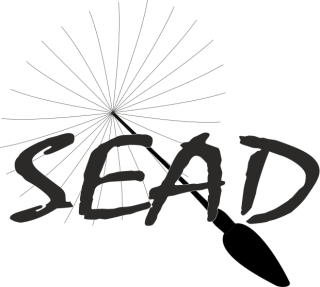
Fig. 8: http://sead.se/ (18.07.2014)
As such, it bridges the boundaries of the humanities and natural sciences by linking data relevant for research questions irrespective of their origin. Furthermore, it provides online access to a wealth of previously unpublished grey literature data, along with a clearing house model for ensuring data quality and a collaborative network of national and international projects and cyber-infrastructures. SEAD is being developed and managed at the Environmental Archaeology Lab (MAL)64, Department of Historical, Philosophical and Religious Studies65, and HUMlab at Umeå University; in collaboration with The Laboratory for Ceramic Research66 and National laboratory for wood anatomy and dendrochronology67 at Lund University. It is also included in the Swedish National Heritage Board’s information strategy and DAP project. The database includes results from several thousand publications, but as yet, only a few research projects have used the system as an analysis tool.68 The Swedish Rock Art Research Archive (SHFA, Svenskt HällristningsForskningsArkiv)69 is essentially an online, tagged image database where depicted objects can be searched through keywords and location metadata. No map interface is publicly available (although objects are linked to FMIS) and cross-queries are not feasible in the online system, making it a somewhat limited research tool. There has recently been a campaign by a number of digitally aware Swedish archaeologists to improve the accessibility of archaeological data, not least from past excavations and analyses. A result of this has been that the SND (Swedish National Data Service)69 now provides access to some archaeological GIS data. Unfortunately these data are not available in a form which easily permits innovative research across multiple sites, and although plans are being formed, Sweden as yet lacks a common infrastructure for facilitating this.
An indication of the volume of digital data and research in archaeology is perhaps provided by the existence of the ARKDIS (Archaeological information in the digital society) project71, which aims to understand the implications of digitalization and the flow of digital information for archaeology and cultural heritage research. These aims are similar to those of DAP, although at a more abstracted and less process oriented level. Much of the data potentially available for archaeological research is created by the commercial and state sectors, but is rarely made openly or easily available to the research community. Surveys and excavations undertaken by the Swedish Heritage Board’s former consultancy wing (UV, Uppdragsverksamheten)72 generally use the Intrasys recording software73, which is also commonly used in commercial archaeology but seldom used in academic projects. As a result of this, and other collaborative problems, there is a significant lack of data exchange between the commercial and academic archaeological communities. This is a hindrance to research which projects such as DAP, ARKDIS and SEAD are actively working to improve upon.
Digital History
Digital databases of Sweden’s historical data date back to the 1970’s with parish registers and governmental records from the 18th century to the present having been the main foci for digitization and research. There are also, however, older Swedish sources digitized and used in research, including Menota, which contains medieval texts from the Nordic countries, and material at the Swedish National Archive (Riksarkivet)74. The latter hold digitized religious and governmental medieval material, including, for example, diplomatic correspondence75. The Swedish National Archive is also constructing a database of the Corpus Reuelacionum Sancte Birgitte (St Bridget of Sweden).76
Demographic Data Bases
The Demographic Database (DDB), hosted at Umeå University, has been computerizing Sweden parish registers since 1973, focussing on making records from the 18th and 19th century available internationally. DDB started as a temporary employment project, under the support of the Swedish National Archives, in 1973 and today the database POPUM includes ca. 5 million parish records concerning about 1.2 million individuals.77 The database78, searchable through the Indiko digital tool79, is one of the world’s most information-dense historical population databases.
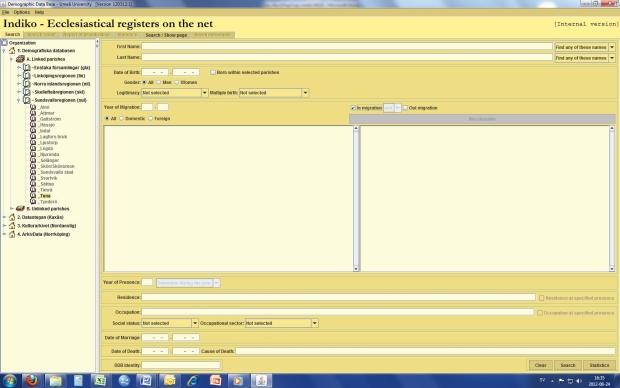
Fig. 9: http://rystad.ddb.umu.se/indiko/ipopup_en.shtml (18.07.2014) Search interface of Indiko
It includes linked data from different parish records, including catechetical registers and those for births and baptisms, banns and marriages, migration, and deaths. Today, the DDB is an interdisciplinary centre for Swedish and international researchers and research groups working in areas as broad as history, cultural geography, psychology, medicine and statistics. A common interest in population research unites researchers at the interdisciplinary Centre for Population Studies (CPS), with many of them using the population databases of DDB, to analyse social history. Although the available digital tools are often used to retrieve data and statistics they are quite limited when it comes to data processing functionality. Indiko, for example, can be used in different languages and to present data in simple ways, but lacks processing and visualization interfaces.
An attempt has been made to better visualize historical demographical data, specifically annual on parish level data for the years 1749 to 1859, using Geographical Information Systems (GIS) technology in the search engine SHiPS.80SHiPS provides access to data on population, births, deaths, migration and marriages in the Tabellverket database81, mostly divided by sex but also including other processed data. The system increases the potential for researchers to undertake the analysis of, among other things, social history with spatial and temporal dimensions, using a combination of digital material and online tools.
A number of publications with an emphasis on quantitative methods and the use of digitized data, in combination with critical perspectives, have recently emerged from the CPS research environment, including those on: ordinary women in job-market conflicts82, birth control83, infant mortality among Sami and settlers84, dysentery85 and life before and after crime86.
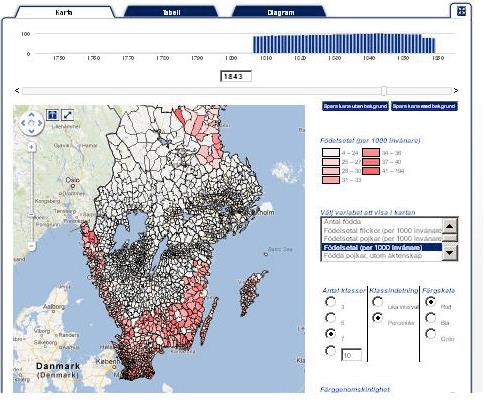
Fig. 10: http://ships.ddb.umu.se/ (18.07.2014)
Minorities, health issues and daily life in Sweden from the 18th century to the present are important aspects of ongoing research. History is clearly linked to social science in these studies, and the digital historical data are frequently used in contemporary studies.
The Scania Demographic Database was initiated in 1983 in southern Sweden, and was primarily created and designed for genealogists, local historians and schoolchildren. The database does, however, hold records of births and baptisms, marriages, deaths and burials, and migration. This project has since been superseded by the Demographic Database Southern Sweden87, and information on parallel databases of ships, mercantile activity and nicknames can be found through their website.
Medical History Database
The LiU E-Press at Linköping University has published open access since 1996.88 These databases primarily include historical data from regional archives, including: fines register (ca. 1800–1900)89; soldier's register (1682 and 1901)90; local hospital records (1838–1895)91; mine workers’ court records (1788–1851); local police authority (1874–1879)92 and 19th century prison records including spinning house records93.

Fig. 11: http://www.ep.liu.se/databas/medhist.en.asp (18.07.2014)
The Medical History Database94 was started as a social initiative in order to provide opportunities for the long-term unemployed in Dalarna. It involved enhancing people’s computer skills, and thus increasing their job market chances, at the same time as providing digital access to an important set of records. The project has been monitored and quality controlled by Umeå, Norrköping and Linköping Universities and contains just over 11,000 documents at the time of writing. The database contains information from a wide variety of medical historical sources from the period 1814–1916, primarily reports from hospital inspections, medical board meetings, and provincial doctor visits. By providing digital access to the material, it becomes searchable, easy to access and damage to fragile documents is reduced. Text and statistics from health reports stored in The Medical History Database have been used to analyse epidemics95, infant mortality96 and other public health issues in 19th century Sweden97. Genre analysis has also been used on the reports from provincial doctors 98. Although these data allow researchers to get closer to the everyday life of the past, the perspective is often that of the doctors. Critical perspectives are therefore needed and often used by researchers in the analysis of the digitized material.
Digital Analysis of Verb-phrases
Based in Uppsala, the Gender and Work (GaW)99 project uses digitized data, with verb-phrases as the core information, to analyse work activities in relation to gender. The database, built by the DDB in Umeå, also includes linked and searchable contextual information about the activities, expressed as verb-phrases, and about the individuals performing the activities. GaW is based upon a diverse source material consisting primarily of court and account records from the mid-16th to the late 18th century, and includes a growing number of some 19,000 verb-phrases (January 2014) and more than 5,000 individuals. Methodological considerations are problematized in research using the digital tool, where activities like selling cloth or healing wounds in large datasets are highlighted and linked to extensive data on the individuals conducting the activities described in the verb-phrases100.
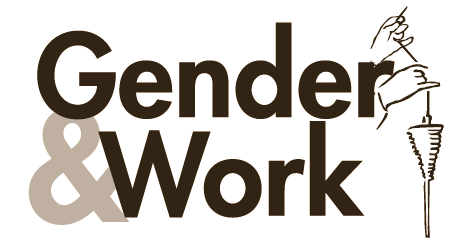
Fig. 12: http://gaw.hist.uu.se/ (18.07.2014) Gender and Work, logotype designed by Ulf Carlén
The “invisible work” of women and children (i.e. work not visible in occupational titles) and their social situations in different parts of Sweden are central to this research. The gendered division of work and the situation for widows of craftsmen in the early modern era are examples of matters that have been studied with this method101. This digital tool makes it possible to study work activities among previously marginalized groups and individuals, using for instance theories formulated by Judith Butler and Amartya Sen. It is planned to be available open access online within the next few years. The so far limited visualisations will be geo-referenced to strengthen the spatial and temporal dimensions.
Contemporary Global Analysis
Gapminder102 is perhaps the most internationally renowned data visualization/analysis tool of Swedish origin. Its storing, processing and visualizing of historical data has contributed considerably to the public understanding of historical data, both nationally and internationally.
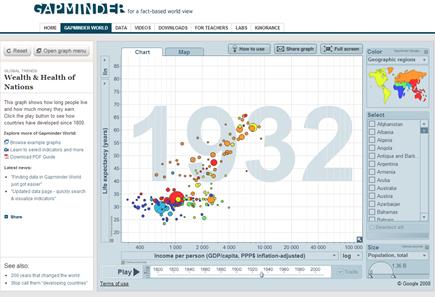
Fig. 13: http://www.gapminder.org/world (18.07.2014)
The tool can be used to visually analyse international statistics from contemporary history and the present in order to better understand economic and health developments in nations, regions and on a global scale103. Through the use of intuitive visualization methods it has been possible to expose and disseminate important information on the details behind large scale trends, many of which expose weaknesses or fallacies in generally accepted visions of the world today and its recent population history. However, the use of Gapminder in historical research has so far been limited, and the tool has been used primarily in teaching in a large scale attempt to fight ignorance and promote a fact based worldview.
Further Discussion
Digital developments in linguistics and archaeology evolved in parallel in Sweden, as forerunners to what was to follow in the field of history. In contrast to earlier work, digital history projects tend to be interdisciplinary and interactive, encouraging user participation and engagement with sources in multimodal and experimental ways. Much of the work is still, however, orientated towards single text based sources (e.g. corpora) and seldom ventures outside traditional disciplinary boundaries. As such, little advantage is taken of the increased possibilities for interdisciplinary science offered by digital techniques. Many of the publicly available database systems of interest for historical research, whilst containing a vast wealth of important and useful data, lack anything more than a rudimentary search interface. This drastically reduces the systems’ direct usability in advanced research, and, at least in the case of the medical and population databases, necessitates the manual extraction, re-compilation and manipulation of the data before it can be applied to complex research questions. This is perhaps an unfortunate reflection of the history of research database development, where projects have tended to focus on either the digitalization of as much data as possible, or clever technical solutions; but not both. This is not unique to the humanities, and in some cases perhaps reflects more the preconceptions of funding agencies and a reluctance to undertake sufficient investment, rather than the desires of the infrastructure creators and users. Digitization and web access is in itself not enough to create opportunities for ground-breaking research, and there must be a move towards the integration of innovative, powerful interfaces with and between existing and new databases. This is more expensive than “simply” creating a website or a project orientated database, and the humanities need to actively lobby for increased funding for digital infrastructures on their domain science terms. The larger research foundations in Sweden, in particular the Wallenberg foundations104, Swedish Research Council105 and Riksbankens Jubileumsfond106, have invested in digital infrastructure to enhance research in the humanities. Although most welcome, these investments are still disproportionately small in comparison to funding given to fields such as life sciences and physics.
DH researchers, including those in Swedish digital history, have received criticism for being unscholarly in their choice and application of methods and tools. Critics have stressed, on a global scale, the importance of basing research on qualified research questions and not solely on data and visualizations.107 If research is led by the accessibility of data, albeit a very large amount and well visualized, it risks being led along the wrong path.108 Naïve, un-critical use of official maps and data can, for example, contribute to reproducing prevailing cultural power relations.109 Maps and borders produced in the West can, according to the critics, give an ethnocentric/hegemonic perspective on the past.110 A particular warning has been issued to the effect that data as a concept and visualizations such as tables, diagrams and maps create an illusion of objectivity.111 It has further been implied that “GIS is a seductive technology, a magic box capable of wondrous feats, and the images it constructs so effortlessly appeal to us in ways more subtle and powerful than words can”.112 Within archaeology, discussions are still ongoing as to the place of GIS as neutral tools in the objective analysis of data or as an intrinsic part of research methodologies.113 In DH challenges of bias in technology, funding and academia are also highlighted as a problematic dark side of DH.114 Once again, these aspects are not unique to the humanities, and the natural sciences must also be continually aware of the limits and implications of their databases.115
Although these source critical aspects are important, there are several problems with such binary and rigid criticism of the digitization of history. To begin with, the increasing accessibility of sources is of enormous benefit for current and future historians. Open access to data has a democratizing effect on research, by providing public access and transparency. With open access it is quite simply cheaper to get at some sources, a fact which in itself may have the knock-on effect of making less mainstream, or more difficult to fund, projects and angles more feasible (although as suggested above the full potential for usage is often hampered by inadequate interfaces to the data). This has certainly been the case in some areas, with minorities being given a greater research prominence, and previously unseen aspects of social history being revealed. The previously invisible women and children of history and prehistory are being made visible and some of the Swedish research presented above highlights how critical perspectives can be used in this research. In these projects, marginalized groups, including illegitimate children, indigenous people, the sick, the elderly and workers, are being highlighted in research based upon primary sources. Early career researchers now have a greater opportunity to access data and break down established “facts” of history and prehistory. Even school students using historical databases can find new perspectives and falsify the work of earlier historians.116 There is a danger which is often ignored in discussions on the use of open access systems, however, which applies as much to the press, social networks and online shopping recommendations as it does to research. That is the tendency to confuse quality or relevance with popularity.117 This trend is not limited to the academic use of digital sources, and could be considered as part of a trend towards a society where popularity, multitasking and hyper-attention challenge reflective critical thinking.118
It has been argued that DH makes the humanities too data-driven and oriented towards quantitative methods, losing the values of critical qualitative methods.119 Much of this critique could equally be applied to non-digital historical science, where the critical appraisal of sources and choice of analysis methods is equally important. In Swedish digital history research, so far at least, the relational proximity to the original sources seems to be quite strong. For example, the combination of quantitative and qualitative methods is common in research and reflections from both the Center for Population Studies and the Gender and Work project. Using digital material and tools does, however, at least in part, produces new demands on critical thinking and opens up new possibilities for transforming the humanities.120 Nevertheless, there is a tendency for criticism to be heavily focused on the actual digitization of historical sources, resulting in the importance of modes of representation, underlying logics and the materiality of the interface, as well as the engagement of the researcher being often underplayed. In contrast, within the Swedish examples, historical research has been shown to benefit from more innovative and dynamic interfaces and processes. The construction of knowledge within the humanities needs re-evaluation when new possibilities occur for creating, re-creating and mediating, as shown by the experience of dynamic digital maps.121 New digital research methods are continually being developed, and synergic effects of collaboration and new technology can augment our understanding of the surrounding world.122 Clearly quantitative analyses of historical data need to be followed up with more hermeneutically-inspired close readings and interpretations.123
A recent trend, seen in Sweden and internationally, towards the use of digital environmental reconstructions and the GIS based analysis of landscapes, and the integration of natural science data with humanities oriented interpretation, may provide a model for the solution of some of the above discussed issues.124
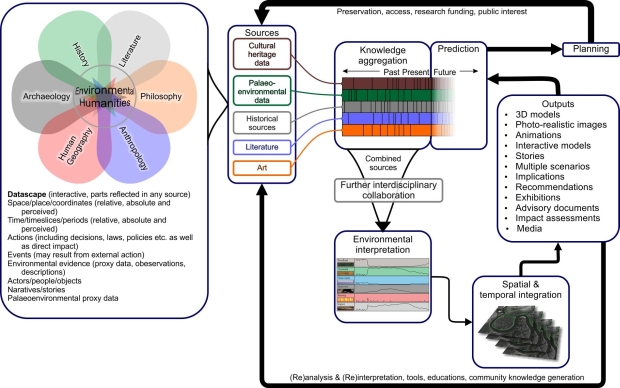
Fig. 14: Illustration of one possible digital research process approach to the transdisciplinary study of past, present and future environments as the digital environmental humanities. Made by Philip Buckland, presented at the conference ‘Sorting the DH Out’ December 2013 http://www.humlab.umu.se/sortingdhout/ - HUMlab Umeå
This theme also serves to illustrate the importance of digital techniques for breaking down disciplinary boundaries and facilitating trans-disciplinary science. In a recent example, Buckland125 demonstrates this by using a palaeobiodiversity database as the data source for a bibliographical study of the late entomologist Russell Coope.
Deep maps and interactive data connected maps, such as the ones being created in Umeå, with many layers of data and information, can give a more in-depth understanding of a place’s history.126 Creating these systems is a considerable challenge, however, both economically and methodologically, not least in terms of data collation and entry. Besides securing long-term funding for the complete project scope, which is currently problematic in Sweden, the process of effectively defining relationships and models to link different layers of data and maps is complex. In addition to the classic problems of unclear archives and fuzzy borders that have moved, changed and been removed, there are also multifarious problems associated with different ways of storing data and metadata. It takes time and resources to build up and manage these digital materials and systems, and there is often a risk that their actual usage takes a back seat to the infrastructural side of things. In addition to reliable platforms, connectivity, open access to sources and source codes, sustainable digital research requires perseverance and patience amongst researchers, developers and funders.
Conclusion
The status quo of DH in Sweden rests upon a rather long tradition of research based on digital material and tools in linguistics, archaeology and history. The examples in this essay highlight the interdisciplinary and collaborative essence of DH, and how digital material and tools can support research in the study of history. Historians using the demographical database in Umeå, and more recently the verb-phrase database in Uppsala, have published research highlighting marginalized groups from different theoretical perspectives, and it is clear that local and national history can be studied in new and experimental ways. From the Swedish perspective, with strong tradition of illuminating the contributions of minority groups in history, we see great potential in using multimodal material to move beyond the borders of our understanding of human creativity in distant times and places. Building on this baseline is an important challenge for the future, using the potential of open access and international collaboration to make Swedish research global. Even if Gapminder is a truly global digital tool, more research using more obscure and currently less accessible data sources can and should be conducted to help us better understand the past, present and perhaps the future of the global community.
For the future, it is vital to make use of the manifold possibilities offered by digital material and tools. To utilize their potential positively we must develop more cross-disciplinary collaborations; avoid dichotomies when quantitative and qualitative methods and analyses are separated; become better at illustrating and communicating uncertainties; and last, but not least, formulate solid and important research questions. The latter can perhaps be developed, in part, through creative playing with data, and the importance of explorative data analysis should not be underestimated. The methodological challenges that digitization involves are perhaps primarily related to the relevance and credibility of sources – a challenge that researchers best approach with critical research questions and a critical attitude towards sources. Questions and ideas are influenced by the digital context in a complex relationship. The effects of digital material and processing on historiographical development need to be thoroughly studied in future research in order to better understand contemporary and future knowledge production, its merits and shortcomings. Digitization can contribute to the development of knowledge, but it should not be an end in itself.
Notes:
1 Kenneth Nyberg, Digital historia: en inringning, in: Jessica Parland-von Essen / Kenneth Nyberg, Historia i en digital värld, 2014, online publication available at: <http://digihist.se/3-forskarvarldens-respons/digital-historia-en-inringning/> (Accessed 18.07.2014).
2 Thomas Nygren, Digitala material och verktyg. Möjligheter och problem utifrån exemplet spatial history, in: Historisk Tidskrift 133/3 (2013), pp. 474–482.
3 <http://digitalhumanities.org/centernet/centers/> (18.07.2014).
4 <http://spraakbanken.gu.se/eng/about-us/about-spr%C3%A5kbanken> (18.07.2014).
5 <http://spraakbanken.gu.se/> (18.07.2014).
6 <http://www.ling.su.se/english/section-for-computational-linguistics> (18.07.2014).
7 <http://spraakbanken.gu.se/eng/resources/suc> (18.07.2014).
8 Mats Dahlström / Epsen Ore, Elektronisches Edieren in Skandinavien in: Paula Henrikson / Christian Janss (eds.), Geschichte der Edition in Skandinavien, Berlin 2013, pp. 143–166.
9 <http://spraakbanken.gu.se/korp/#lang=en&search=word%7Cglad&page=0%20age=0%20> (18.07.2014).
10 <http://www.clarin.eu/> (18.07.2014).
11 <http://runeberg.org/> (18.07.2014).
12 Mats Dahlström / Epsen Ore, Elektronisches Edieren in Skandinavien in: Paula Henrikson / Christian Janss (eds.), Geschichte der Edition in Skandinavien, Berlin 2013, pp. 143–166.
13 <http://etjanst.hb.se/bhs/ith/humanit-eng.htm> (18.07.2014).
14 Patrik Svensson, The Big Digital Humanities, forthcoming.
15 <http://www.littvet.uu.se/forskning/avdelningen_for_litteratursociologi/forskningsprojekt/itlit/> (18.07.2014).
16 <http://www.littvet.uu.se/digitalAssets/30/30652_program-digitala-dimensioner-i.pdf> (18.07.2014).
17 Patrik Svensson, Humanities Computing as Digital Humanities in: Digital Humanities Quarterly 3/3 (2009).
18 <http://www.humlab.umu.se/en/research-development/media-places/screenscapes/> (18.07.2014).
19 Coppélie Cocq, Anthropological places, digital spaces, and imaginary scapes. Packaging a digital Sa´miland, in: Folklore 124/1 (2013) pp. 1–14.
20 Anna Johansson, Kroppar, dislokationer och politiska praktiker på YouTube, in: Kulturella perspektiv – Svensk etnologisk tidskrift 3–4 (2012), pp. 68–76.
21 Anna Foka / Viktor Arvidsson, Digital Gender. A Manifesto. Report on the Research Workshop Digital Gender, Theory, Methodology, and Practice 2014, available at SSRN: <http://papers.ssrn.com/abstract=2437659> (18.07.2014); Jennie Olofsson, “Did you mean: why are women cranky?”. Google – a means of inscription, a means of description?, in: Humanities and the Digital, forthcoming 2015.
22 <http://www.humlab.umu.se/digitalgender> (18.07.2014).
23 Anna Foka, Sensory Bread and Circuses. Towards a Conceptual Making of Sound in: Betts, E. and Graham, E.J. London, Multisensory Antiquity, forthcoming 2015.
24 <http://www.digitalhistorian.net/umedh/> (18.07.2014).
25 <http://digitalekphrasis.wordpress.com/about-digital-ekphrasis> (18.07.2014).
26 <http://www.umu.se/sok/english/research-database/view-research-projects?code=573&View=base&uid=joca0001joca0001> (18.07.2014).
27 <http://www.humlab.umu.se/en/research-development/multiple-screens-as-material/> (18.07.2014).
28 See Matt Ratto, Critical Making. Conceptual and material studies in technology and social life, in: The Information Society, 27/4 (2011), pp. 252–260.
29 Anna Foka, Sensory Bread and Circuses. Towards a Conceptual Making of Sound in: Betts, E. and Graham, E.J. London, Multisensory Antiquity, forthcoming 2015; Cecilia Lindhé, A Visual Sense is Born in the Fingertips. Towards a Digital Ekphrasis, in: Digital Humanities Quarterly, 7/1 (2013), pp. 376–82.
30 <http://www.sead.se/> (18.07.2014).
31 See below; Philip I. Buckland, Environmental Archaeology, Climate Change and E-Science, in: Skytteanska Samfundets Årsbok, Thule (2010), pp. 55–69.
32 Thomas Nygren, Digitala material och verktyg. Möjligheter och problem utifrån exemplet spatial history, in: Historisk Tidskrift 133/3 (2013), pp. 474–482.
33 Thomas Nygren / Lotta Vikström, Treading Old Paths in New Ways. Upper Secondary Students Using a Digital Tool of the Professional Historian, in: Education Sciences, 3/1 (2013), pp. 50–73.
34 <http://www.humlab.umu.se/en/research-development/media-places/space,-materials-and-media-2013/> (18.07.2014).
35 Thomas Nygren, Students Writing History Using Traditional and Digital Archives, in: Human IT, forthcoming 2014.
36 <http://www.humlab.umu.se/en/research-development/media-places/> (18.07.2014).
37 <http://qviz.eu/> (18.07.2014).
38 <http://sead.se/> (18.07.2014).
39 <http://www.humlab.umu.se/en/research-development/qviz/ships/> (18.07.2014).
40 <http://textometrica.humlab.umu.se> (18.07.2014); Simon Lindgren / Frederik Palm, Textometrica Service Package, 2011; online at <http://textometrica.humlab.umu.se> (18.07.2014).
41 <http://www.ddb.umu.se/english/> (18.07.2014).
42 <http://sead.se/> (18.07.2014).
43 <http://www.humlab.umu.se/en/research-development/mapping-the-jewish-communities-of-the-byzantine-empire/> (18.07.2014).
44 <http://www.humlab.umu.se/en/research-development/citizmap/> (18.07.2014).
45 <http://www.humlab.umu.se/en/research-development/nedimah/> (18.07.2014).
46 <http://www.humlab.lu.se/en/about/> (18.07.2014).
47 see e.g. Susanne Schötz et al., Functional Data Analysis of Tongue Articulation in Palatal Vowels, in: Gothenburg and Malmöhus Swedish / Proceedings of Interspeech, Lyon 2013.
48 HuMe; Mikael Roll / Pelle Söderström / Merle Horne, Word-stem tones cue suffixes in the brain, in: Brain research 5 (2013), pp. 116–120.
49 <http://www.pompejiprojektet.se/navigate.php> (18.07.2014).
50 Henrik Boman, Let there be light. Light in atrium houses in Roman Pompeii and Herculaneum, in: Vesuviana 3 (2011), pp. 89–102.; Arja Karivieri, The Atrium Mosaic in the Casa di Caecilius Iucundus and the Aesthetics of a Pompeian Huse, in: Olof Brandt / Philippe Pergola (eds.), Marmoribus Vestita, Miscellanea in Onore di F. Guidobaldi, Cittá del Vaticano 2011, pp. 763–773; Anne-Marie Leander Touati, Water, well-being and social complexity in Insula V 1. A Pompeian city block revisited, in: Opuscula 3 (2010), pp. 105–161.
51 <http://www4.lu.se/digitalheritage/projects/petroglyfiskt-8211-virtuella-upplevelser-kring-haellr> (18.07.2014).
52 See for an overview Thomas L. Evans / Patrick Daly (eds.), Digital archaeology. Bridging method and theory, London 2006.
53 <http://www.arkeologi.uu.se/> (18.07.2014).
54 <http://www.arkeologi.uu.se/Seminars/Rethinking_Human_Nature_GIS_and_Landscape/?languageId=1> (18.07.2014).
55 <http://www.idesam.umu.se/english/mal/?languageId=1> (18.07.2014).
56 <http://www.raa.se/om-riksantikvarieambetet/in-english/> (18.07.2014).
57 <http://www.fmis.raa.se/> (18.07.2014).
58 E.g. ADIN; Per H. Ramqvist, Arkeologiska utgrävningar i Norrland 1950–1995. En databas sammanfattande 1700 undersökningar (Studier i regional arkeologi), Örnsköldsvik 2000.
59 <http://ornkartan.ornskoldsvik.se/karta/?Forntid> (18.07.2014).
60 <http://www.raa.se/kulturarvet/arkeologi-fornlamningar-och-fynd/digitala-arkeologiska-processer/> (18.07.2014).
61 <http://www.ksamsok.se/in-english/> (18.07.2014).
62 <http://snd.gu.se/en> (18.07.2014).
63 <http://sead.se/> (18.07.2014); SEAD; Philip I. Buckland / Erik Eriksson / Fredrik Palm, SEAD –The Strategic Environmental Archaeology Database. Progress Report Spring 2014, The Environmental Archaeology Laboratory, Umeå University 2014, online: <http://umu.diva-portal.org/smash/get/diva2:716861/FULLTEXT01.pdf> (18.07.2014); and see for a comprehensive description Philip I. Buckland, SEAD - The Strategic Environmental Archaeology Database. Inter-linking multiproxy environmental data with archaeological investigations and ecology, in: Graerner Earl et al. (eds.), CAA2012, Proceedings of the 40th Annual Conference of Computer Applications and Quantitative Methods in Archaeology (CAA), Southampton 2013.
64 <http://www.idesam.umu.se/english/mal/> (18.07.2014).
65 <http://www.idesam.umu.se/english/?languageId=1> (18.07.2014).
66 <http://www.geol.lu.se/kfl/> (18.07.2014).
67 <http://www.geol.lu.se/dendro/en/index.htm> (18.07.2014).
68 See <http://sead.se/publications/> (18.07.2014).
69 <http://www.shfa.se/?lang=en-GB> (18.07.2014).
[70] <http://snd.gu.se/en/search-and-order-data/gis-data> (18.07.2014).
71 <http://www.abm.uu.se/research/Ongoing+Research+Projects/ARKDIS/?languageId=1> (18.07.2014).
72 <http://www.raa.se/om-riksantikvarieambetet/in-english/> (18.07.2014).
73 <http://www.intrasis.com/engelska/index_eng.htm> (18.07.2014).
74 <http://riksarkivet.se/digitala-resurser> (18.07.2014).
75 <http://sok.riksarkivet.se/sdhk> (18.07.2014).
76 <http://riksarkivet.se/crb> (18.07.2014).
77 Pär Vikström / Sören Edvinsson / Anders Brändström, Longitudinal Databases. Sources for Analyzing the Life-Course, in: History and Computing 14 (2002), pp. 109–128.
78 <http://www.ddb.umu.se/english/database/> (18.07.2014).
79 <http://rystad.ddb.umu.se/indiko/ipopup_en.shtml> (18.07.2014).
80 <http://ships.ddb.umu.se/> (18.07.2014).
81 <http://www.ddb.umu.se/english/database/the-database-tabverk> (18.07.2014).
82 Lotta Vikström, Sources in conflict. Women’s work in Sundsvall, Sweden, 1860–1993, in: Harvey J. Graff et al. (eds.), Understanding Literacy in Its Historical Contexts. Past Approaches and Work in Progress, Lund 2009, pp. 127–142.
83 Sören Edvinsson / Sofia Kling, The Practice of Birth Control During the Fertility Transition. Introduction, in: History of the Family 15/2 (2010), pp. 117–124.
84 Peter Sköld et. al., Infant mortality of Sami and settlers in Northern Sweden. The era of colonization 1750–1900, in: Global Health Action 4 (2011), p. 8441.
85 Helene Castenbrandt, Rödsoten under kriget 1808–09, in: Christer Ask (ed.), Gränsland i krigens skugga. Västergötlands fornminnesförenings tidskrift, Skara 2012.
86 Lotta Vikström, Life before and after crime. Life-course analyses of young offenders arrested in 19th century northern Sweden, in: The Journal of Social History 44 (2011), pp. 857–884.
87 <http://www.ddss.nu/(S(bynlxrm0atdkjafcqf2g2xvu))/english/Default.aspx> (18.07.2014).
88 <http://www.ep.liu.se/databas/index.en.asp> longitudinal databases for research (18.07.2014).
89 <http://www.ep.liu.se/databases/boter/default.en.aspx> (18.07.2014).
90 <http://www.ep.liu.se/databases/soldatregister/default.en.aspx> (18.07.2014).
91 <http://www.ep.liu.se/databas/sjukhusrulla.en.asp> (18.07.2014).
92 <http://www.ep.liu.se/databases/poliskammare/default.en.aspx> (18.07.2014).
93 <http://www.ep.liu.se/databas/fangrulla.en.asp> (18.07.2014).
94 <http://www.ep.liu.se/databas/medhist.en.asp> (18.07.2014).
95 Carl Henrik Berg, Koleran i Norrland, in: Oknytt 1–2 (2001), pp. 3–22.
96 Stina Bohman, Omsorg om livet. Spädbarnsdödlighetens förändring i Ådalen under 1800-talet, Uppsala University 2010.
97 Malin Appelquist / Peter M. Nilsson, Folkhälsan i östra Skåne 1860–1899 – en studie utifrån provinsialläkarrapporter, in: Svensk medicinhistorisk tidskrift 9/1 (2005), pp. 95–114.
98 Tony Gustafsson, Mellan pliktuppfyllelse och berättarglädje. En genreanalys av provinsialläkarrapporter från 1800-talets första hälft in: Torbjörn Gustafsson Chorell / Maja Bondestam (eds.), In på bara huden, Nora 2010, pp. 27–44.
99 <http://gaw.hist.uu.se/TheDatabaseGaW/tabid/2841/language/sv-SE/Default.aspx> (18.07.2014).
100 Eva Pettersson / Joakim Nivre, Automatic verb extraction from historical Swedish texts, in: Proceedings of the 5th ACL-HLT Workshop on Language Technology for Cultural Heritage, Social Sciences, and Humanities, Portland OR 2011 (Association for Computational Linguistics), pp. 87–95.; Rosemarie Fiebranz et. al., Making Verbs Count. The research project ‘Gender and Work’ and its methodology, in: Scandinavian Economic History Review 59/3 (2011); Elisabeth Gräslund Berg et al., Praktiker som gör skillnad. Den verb-orienterade metodens roll i forskningsprojektet ‘Genus och arbete’, in: Historisk Tidskrift 133/2 (2013), pp. 335 –354.
101 Maria Ågren, Genus och arbete i det tidigmoderna Sverige, in: Historisk Tidskrift 132/1 (2012) pp. 55–64; Dag Lindström, Privilegierade eller kringskurna? Hantverkänkor i Linköping och Norrköping 1750–1800, in: Historisk Tidskrift 132/22 (2012), pp. 18–246.
102 <http://www.gapminder.org/world> (18.07.2014).
103 Hans Rosling, Religions and babies TED 2012 <http://www.ted.com/talks/hans_rosling_religions_and_babies#t-216030> (18.07.2014); Hans Rosling, New insights on poverty TED 2007 <http://www.ted.com/talks/hans_rosling_reveals_new_insights_on_poverty> (18.07.2014); Hans Rosling, Visual technology unveils the beauty of statistics and swaps policy from dissemination to access, in: Statistical Journal of the IAOS 24 (2007), pp. 103–104; Marion Field, The Big Picture. A Comparative Review of Several Interactive Web-Based Tools for Problem Analysis in Public Health, in: Journal of Microbiology & Biology Education 12/2 (2011), pp. 208–210.
104 <http://www.wallenberg.com/en/> (18.07.2014).
105 <http://vr.se/inenglish.4.12fff4451215cbd83e4800015152.html> (18.07.2014).
106 <http://www.rj.se/en/About-RJ/> (18.07.2014).
107 Stanley Fish, Mind your p’s and b’s. The digital humanities and interpretation, New York Times, 23.01.2012; Todd Presner, HyperCities. A Case Study for the Future of Scholarly Publishing, in: Jerome McGann (ed.), The Shape of Things to Come, Houston 2010, pp. 251–71.
108 Andrew Prescott, The Deceptions of Data, 2013, <http://digitalriffs.blogspot.com> (18.07.2014).
109 Nadine Schuurman, Trouble in the Heartland. GIS and its critics in the 1990s’ Progress, in: Human Geography 24/4 (2000), pp. 569–590.
110 Eric Sheppard, Knowledge Production through Critical GIS. Genealogy and prospects, in: Cartographica 40/4 (2005), pp. 5–21
111 Johanna Drucker, Humanities Approaches to Graphical Display, in: Digital Humanities Quarterly, 5/1 (2011), pp. 1–52.
112 David J. Bodenhamer / John Corrigan / Trevor M. Harris (eds.), The Spatial Humanities. GIS and the future of humanities scholarship, Bloomington 2010.
113 James Conolly / Mark Lake, Geographical information systems in archaeology, Cambridge 2006.
114 <http://www.c21uwm.com/2013/01/09/the-dark-side-of-the-digital-humanities-part-1/> (18.07.2014).
115 See e.g. on the correlation between the distribution of insects and entomologists Philip I. Buckland. The Bugs Coleopteran Ecology Package (BugsCEP) database. 1000 sites and half a million fossils later, in: Quaternary International 2014, <http://dx.doi.org/10.1016/j.quaint.2014.01.030> (18.07.2014).
116 Thomas Nygren / Lotta Vikström, Treading Old Paths in New Ways. Upper Secondary Students Using a Digital Tool of the Professional Historian, in: Education Sciences, 3/1 (2013), pp. 50–73.
117 Bing Pan et. al., In Google we trust. Users' decisions on rank, position, and relevance, in: Journal of Computer-Mediated Communication 12/3 (2007), pp. 801–823.
118 Byung-Chul Han, Müdigkeitsgesellschaft, Berlin 2010.
119 Stanley Fish, Mind your p’s and b’s. The digital humanities and interpretation, New York Times, 23.01.2012.
120 Wendy Hui Kyong Chun, The Dark Side of the Digital Humanities – Part 1, 2013, <http://www.c21uwm.com/2013/01/09/the-dark-side-of-the-digital-humanities-part-1/> (18.07.2014).
121 Todd Presner, HyperCities. A Case Study for the Future of Scholarly Publishing, in: Jerome McGann (eds.), The Shape of Things to Come, Houston 2010, pp. 251–71.; Philip J. Ethington, Comment and Afterword. Photography and Placing the Past, in: Journal of Visual Culture 9/3 (2010) pp. 444–446.
122 Karen K. Kemp, Geographic Information Science and Spatial Analysis for the Humanities, in: David J. Bodenhamer / John Corrigan / Trevor M. Harris (eds.), The Spatial Humanities. GIS and the future of humanities scholarship, Bloomington 2010, pp. 31–57.
123 Frederick W. Gibbs / Trevor J. Owens, The Hermeneutics of Data and Historical Writing, in: Jack Dougherty / Kristen Nawrotzk (eds.), Writing History in the Digital Age. A born-digital, open-review volume 2012, <http://writinghistory.trincoll.edu/data/gibbs-owens-2012-spring/> (18.07.2014).
124 E.g. Philip I. Buckland, Environmental Archaeology, Climate Change and E-Science, in: Skytteanska Samfundets Årsbok, Thule, 2010, pp. 55–69; Philip I. Buckland et al., Integrating Human Dimensions of Arctic Palaeoenvironmental Science. SEAD – The Strategic Environmental Archaeology Database, Journal of Archaeological Science 38/2 (2010), pp. 345–351.
125 Philip I. Buckland, The Bugs Coleopteran Ecology Package (BugsCEP) database. 1000 sites and half a million fossils later, in: Quaternary International 2014, <http://dx.doi.org/10.1016/j.quaint.2014.01.030> (18.07.2014).
126 See <http://ships.ddb.umu.se/ SHiPS> (18.07.2014); <http://sead.se/> (18.07.2014) SEAD; David J. Bodenhamer / John Corrigan / Trevor M. Harris (eds.), The Spatial Humanities. GIS and the future of humanities scholarship, Bloomington 2010.